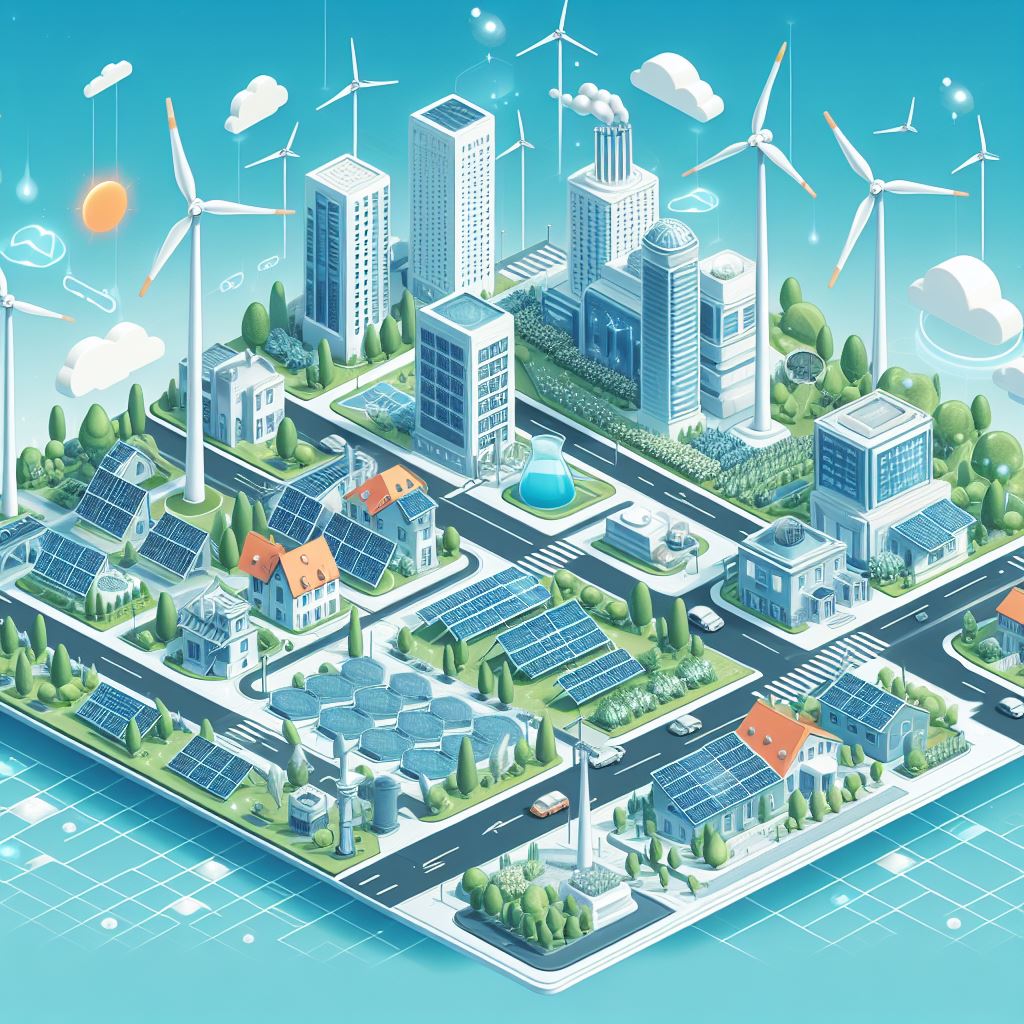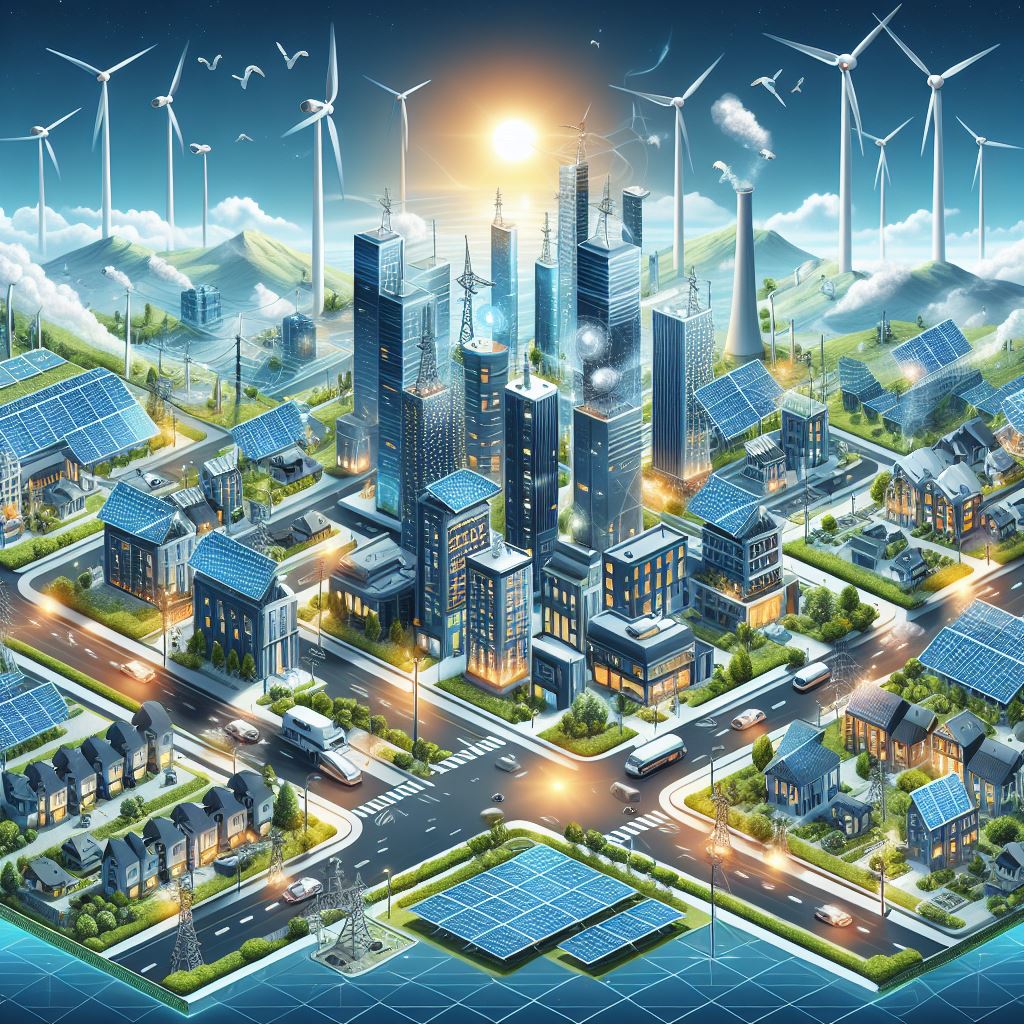
Among the plethora of green energy solutions, hybrid renewable systems have emerged as a particularly potent and efficient option. These systems combine the strengths of multiple energy sources, such as solar and wind power, to provide a reliable, constant, and efficient energy supply.
Understanding Hybrid Renewable Systems
Hybrid Renewable Systems (HRES) stand at the forefront of innovation in the quest for sustainable energy solutions. These systems go beyond the limitations of a single renewable energy source, seamlessly integrating multiple resources to create a more robust and reliable power generation method.
The primary goal of these systems is to mitigate the variability issues inherent in relying solely on one renewable source. For instance, when solar panels experience reduced efficiency due to cloud cover, wind turbines can step in to compensate, ensuring a continuous and stable power supply.
Key Components of Hybrid Systems
At the heart of a hybrid renewable system are two or more of the following elements:
- Solar Panels (Photovoltaic Systems): convert sunlight directly into electricity.
- Wind Turbines: use wind to drive a generator that produces electrical power.
- Hydroelectric Generators: generate power from the flow of water.
- Geothermal Plants: use heat from the Earth’s crust to produce steam and drive turbines.
- Energy Storage Solutions: batteries or other technologies used to store energy when production is down or demand is up.
- Control Systems: manage the distribution and balancing of energy from different sources.
The Advantages of Combining Forces
Reliability and Efficiency
A key advantage of hybrid renewable systems lies in their heightened reliability. With the ability to draw energy from multiple sources, these systems ensure a consistent power output, even when one source is suboptimal. The interplay of different energy sources acts as a built-in backup, guaranteeing uninterrupted energy production. This enhanced reliability addresses the intermittency challenges of individual sources and also contributes to a more stable and dependable energy supply for various applications and communities.
Cost-Effectiveness and Performance
Though the initial investment in establishing a hybrid system may appear significant, the long-term financial gains are undeniably substantial. The fusion of diverse technologies within these systems enhances overall performance and contributes to ongoing operational savings. By combining various energy generation methods, hybrid systems achieve a level of versatility that optimizes performance even in fluctuating environmental conditions. This delicate balance between cost-effectiveness and peak performance positions hybrid systems as a strategic and economically viable choice for sustainable and resilient energy solutions.
Environmental Benefits
The inclusion of multiple renewable energy sources in a hybrid system translates into substantial environmental benefits. Each source is very important in reducing the carbon footprint, marking a departure from traditional reliance on fossil fuels. Through the harnessing of natural elements like sun, wind, or water, hybrid systems pave the way for a significant reduction in greenhouse gas emissions. This commitment to cleaner energy aligns with global efforts to combat climate change.
How Hybrid Systems Are Changing the Game
Hybrid systems have emerged as a transformative force, reshaping the way communities generate and consume energy. Take, for example, an island community that once depended on diesel generators for power. Today, they’ve transitioned to a cutting-edge hybrid system, combining solar and wind power with advanced battery storage. This shift not only slashes energy costs but also champions the cause of environmental sustainability.
These systems can seamlessly integrate with traditional power grids, playing a major role in enhancing grid stability. During peak demands or supply shortages, the hybrid system acts as a reliable backup, contributing to a more resilient and efficient energy infrastructure. This interconnected approach is a significant stride towards the evolution of our current energy grid into a smarter, more adaptive system.
Hybrid systems represent a paradigm shift in energy management, providing a blueprint for a future where sustainability and reliability go hand in hand. As communities worldwide grapple with the imperative to reduce carbon footprints and enhance energy security, the adoption of hybrid systems stands as a beacon of progress.
Steps for Implementing a Hybrid Renewable System
Start by assessing your energy needs and what resources are abundantly available in your area. Consult with professionals to plan the system that’s right for your situation, whether it’s a residential set-up or an enterprise-level project.
Work with certified installers to set up your hybrid system. Once operational, continuous monitoring and optimization are key to ensuring your system is running at peak efficiency, adapting to weather patterns and energy demands.
Many regions offer incentives for renewable energy installations. Research available tax credits, grants, and rebates that can offset the initial investment cost, and look into programs that support feed-in tariffs for surplus energy.
Hybrid systems do require maintenance, but due to the nature of renewable sources, this is often less frequent and less costly than for non-renewable energy systems. Scheduled checks and timely repairs ensure the system’s longevity and efficiency.
The Future Is Now
Hybrid systems, which seamlessly integrate various renewable resources, represent a tailored solution that significantly reduces our environmental footprint. It’s a powerful step to a future where clean, sustainable energy becomes the new standard.
Hybrid renewable systems embody a profound commitment to the health of our planet and our quest for energy independence. As we continue to advance in technology and deepen our understanding of these systems, our ability to create a greener and more resilient world for future generations expands exponentially.
Our planet looks to us to make sustainable choices. By championing hybrid renewable systems, we actively contribute to a more sustainable and eco-friendly future. Let’s join hands in this endeavor, knowing that our collective efforts today pave the way for a cleaner, greener, and more sustainable tomorrow. The hybrid renewable revolution is here – and the future of our planet depends on our commitment to it.

